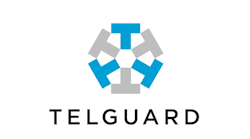When it comes to integrating the Internet of Things (IoT) into the intrusion and home automation space, the “walled garden” approach has prevailed for some time. The appeal for the consumer, at least in the past, was simplicity – the end-user receives a list of curated devices from a single company, and those devices typically work very well together. It is basic bundling – not unlike cable television and internet packages.
From the provider standpoint, the recurring monthly revenue (RMR) associated with the walled garden approach has obvious appeal, as does the manageable support burden, which is a function of the mostly stable and limited portfolio of products. As is so often the case in business, though, what is comfortable does not last.
Indeed, it appears that the consumer market is moving away from walled garden set-ups. Consumers have long pined for a more à la carte approach, and as technologies become simpler and more ubiquitous people feel empowered to build their own home portfolios on a device-by-device basis while making purchases across the full spectrum of providers.
They are drawn to the lack of monthly fees – those same monthly fees that you understandably covet are increasingly becoming a source of fatigue for consumers. Additionally, Z-Wave – the wireless protocol that is, in essence, the “mortar” of the walled garden – is now widely available from other suppliers at no monthly cost. In that way, Z-Wave is headed down the path previous traveled by WiFi: the commonplace nature means consumers are loath to pay for it.
All of this is especially the case as younger, more tech-immersed generations start families and buy homes while continuing to eschew vertically integrated offerings.
Embracing Change
For the independent security dealer, all of these changing customer and technology profiles is already happening. The appeal of the walled garden’s closed system is convenience and usability; however, that point of distinction is being eroded by those same factors.
Parks Associates recently mapped the smart home’s competitive landscape by looking for cues and harbingers in user reviews. What Parks’ Tom Kerber found was that walled garden automation was already showing signs of dying off.
“The breadth of [open] platforms is much more substantial,” Kerber says. “It will be hard to maintain a [vertically integrated] approach, or even, for that matter, a highly curated approach, when a very open approach can provide a similar user experience and provide much more access…to whatever product you may have or want to own.”
If there’s a key takeaway from the Parks Associates study for your purposes, it is this: The move from vertically integrated to open “could happen relatively quickly,” according to Kerber. “Our recommendation to smart home platform providers, as well as service providers, is to plan for that eventuality.”
This means security dealers may need to consider offering a broader range of products, he adds.
Adding Products to Your Portfolio
Fortunately, responding to these demand shifts with a “broader range of products” is easier than you might think. More specifically, the IoT market is tilting in the direction of point solutions – i.e., “smart” consumer products that connect to the internet, such as the Philips Hue light bulb and the Nest thermostat.
Consumers are aware that more innovation is occurring within this sphere, and as they adopt more and more point solutions, the need becomes greater for a system to interconnect and control, through a single interface these various devices found throughout the typical à la carte smart home.
On that front, there is both help and opportunity for the independent security dealer. An effective way to capture such self-reliant consumers is providing them with a second-party “hub” that is compatible will all those point solutions. Telguard’s HomeControl Flex, for example, enables consumers to harness the full power of the IoT and customize their experience by using the simple commands of IFTTT technology – if this, then that.
Thanks to such far-reaching compatibility, the possibilities range from the practical (set my Nest thermostat to away when I arm my system) to the time-saving (open my garage door as I enter my neighborhood) to the whimsical (begin streaming music when the oven is turned on). The possibilities of a point solution’s hub vastly outstrip those of a walled garden system.
Choosing the Best Hub
All of that, of course, appeals to the end-user; but what about the dealer? By now, it should be clear that some kind of point solution’s hub should be part of a dealer’s menu of product offerings. Ideally, you would want a system that is already part of a cellular alarm communicator; thus enabling you to continue offering reliable and professionally monitored security services while also allowing your customers to build their own IoT portfolio.
Since the customer is purchasing and servicing those products independently, your support burden is lowered significantly.
In addition to offering such hubs, the independent security dealer may also find opportunities for growth when it comes to expanding professional monitoring services for these consumer IoT products. Indeed, the Parks Associates study found a significant willingness to pay monthly fees for such services on the part of consumers – that is where RMR retention seems likely to occur.
The reality is that the model that security dealers have come to rely on must adapt before the market forces them to. The best way to do that is to offer products and services that appeal to the point-solutions consumer. By all indications, it is a market segment that is only going to grow.
Shawn Welsh is VP of Marketing and Business Development for Telguard. To request more information about the company, visit www.securityinfowatch.com/10215328.



